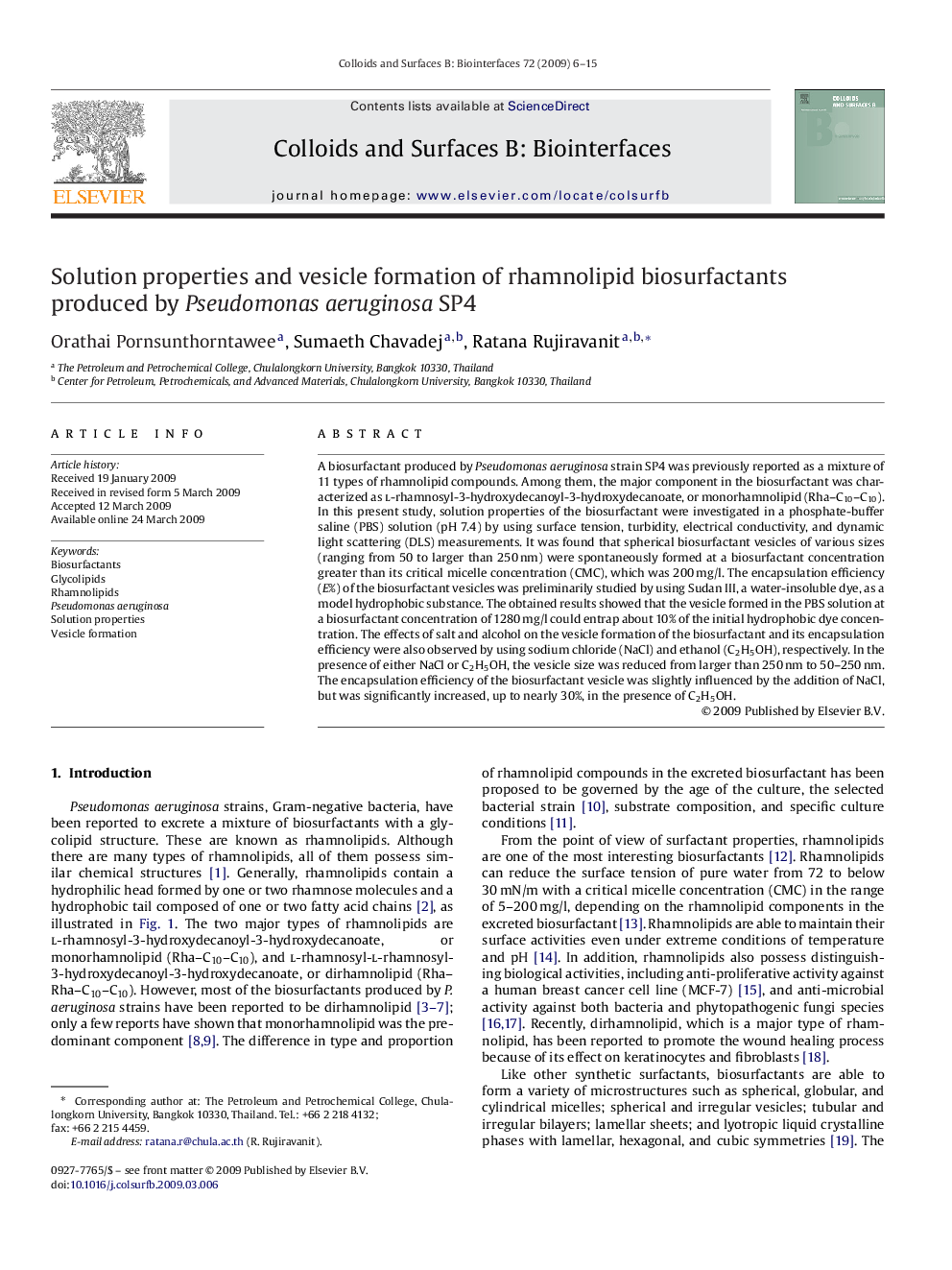| Article ID | Journal | Published Year | Pages | File Type |
|---|---|---|---|---|
| 602248 | Colloids and Surfaces B: Biointerfaces | 2009 | 10 Pages |
A biosurfactant produced by Pseudomonas aeruginosa strain SP4 was previously reported as a mixture of 11 types of rhamnolipid compounds. Among them, the major component in the biosurfactant was characterized as l-rhamnosyl-3-hydroxydecanoyl-3-hydroxydecanoate, or monorhamnolipid (Rha–C10–C10). In this present study, solution properties of the biosurfactant were investigated in a phosphate-buffer saline (PBS) solution (pH 7.4) by using surface tension, turbidity, electrical conductivity, and dynamic light scattering (DLS) measurements. It was found that spherical biosurfactant vesicles of various sizes (ranging from 50 to larger than 250 nm) were spontaneously formed at a biosurfactant concentration greater than its critical micelle concentration (CMC), which was 200 mg/l. The encapsulation efficiency (E%) of the biosurfactant vesicles was preliminarily studied by using Sudan III, a water-insoluble dye, as a model hydrophobic substance. The obtained results showed that the vesicle formed in the PBS solution at a biosurfactant concentration of 1280 mg/l could entrap about 10% of the initial hydrophobic dye concentration. The effects of salt and alcohol on the vesicle formation of the biosurfactant and its encapsulation efficiency were also observed by using sodium chloride (NaCl) and ethanol (C2H5OH), respectively. In the presence of either NaCl or C2H5OH, the vesicle size was reduced from larger than 250 nm to 50–250 nm. The encapsulation efficiency of the biosurfactant vesicle was slightly influenced by the addition of NaCl, but was significantly increased, up to nearly 30%, in the presence of C2H5OH.
